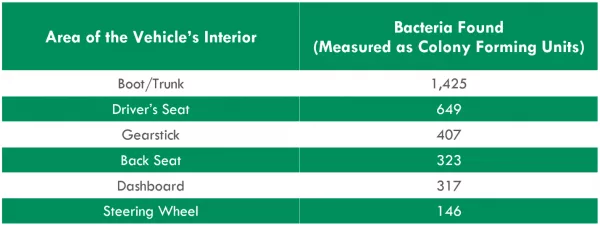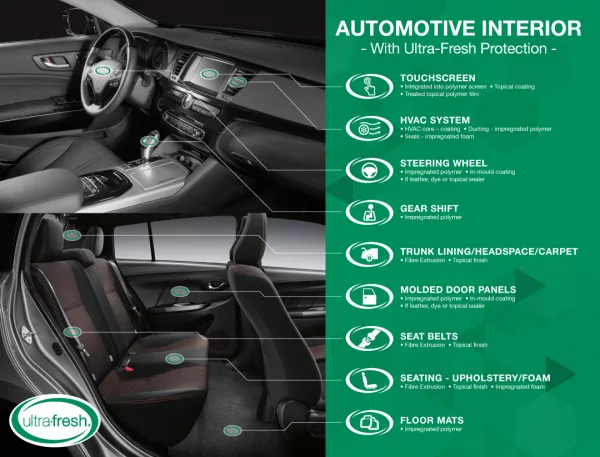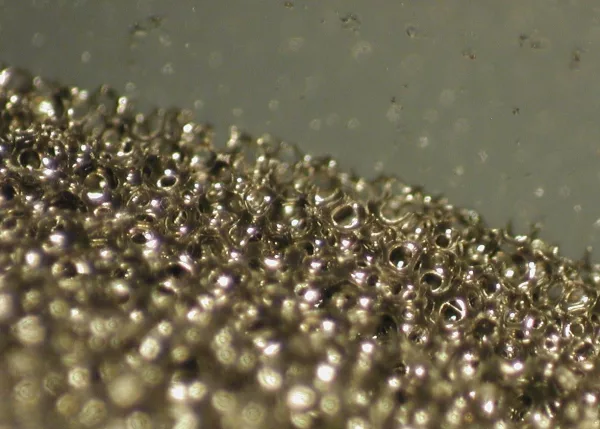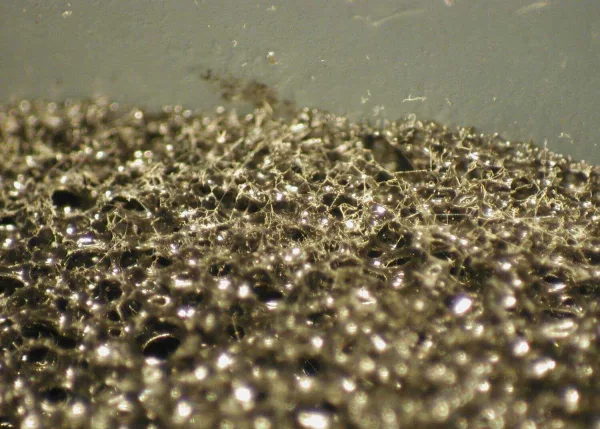Microbes, microbes everywhere. Just about every surface that we touch—and even the ones that we don’t—are breeding grounds for potentially damaging and odor-causing bacteria, mold, and mildew.
Even if we clean these surfaces regularly, the growth of microbes makes most of our living spaces considerably dirtier than we might like to believe—time to rethink that “5-second rule”.
Surprisingly, however, of all of our living spaces, the dirtiest one might not even be in our homes.
The next time you find yourself sitting in traffic, singing along to your favorite songs, know that your audience is considerably larger than it seems—although you’ll need a microscope to see your adoring fans.
Even though the interiors of our cars aren’t technically living spaces—unless you’re a road warrior like millions of other commuters—they can be among the dirtiest spaces we spend our time in. They can even be dirtier than a toilet!
Fortunately, advancements in antimicrobial technologies with vehicular applications have made it easier to keep our commutes as clean as can be.
How Car Interiors Become Dirty
Pet hair on car seats. Mud, sand, and salt on floor mats. Smudges all over touchscreens and door handles and curious odors whose origin is a mystery worthy of Sherlock Holmes. Car owners know two things: gas prices never go down and cars are impossible to keep clean.
Understanding how our cars get dirty can help us to keep them cleaner longer.
Regular Dirt and Grime Accumulation
For better or worse, we live in a world full of microscopic organisms. They’re everywhere and anywhere we want to go—and likelier than not, our cars took us there.
To the park, to the beach, to the grocery store, and to the garden center and beyond. Try as we might to keep our cars clean, trekking trace elements in the form of microbes into our car’s interiors is something of an inevitability.
Everything from the dirt on the soles of our shoes to the particulates trapped in our hair finds its way into our cars. You can think of it as a microbial map of all the places our four wheels have taken us.
Environmental Conditions
Mold, mildew, and most bacteria love damp and dark environments. Attached garages or underground parking garages where most people store their vehicle when they’re not using it, provide great conditions for microbial life.
However, even parking in the sun with all of its germ-killing ultraviolet rays isn’t enough to keep cars clean—plus it’s bad for the paint!
A slightly cracked window during an unexpected downpour can dampen car seats and encourage the growth of mold and mildew. And in humid climes, interior surfaces can collect moisture and promote the growth of microbes.
Spills and Food Debris
Of course, no Monday morning commute is quite complete without a skin-scalding coffee spill. Not surprisingly then, our cars’ cup holders—particularly the more frequently used ones in the center console—are a preferred breeding ground for microbial hitchhikers.
As stated before, mold, mildew, and most bacteria love a damp environment so coffee spills—scalding or not—provide the opportunity for them to grow and multiply.
Even those with a “no food” policy in their car can find a French fry tucked away somewhere that will have them reassessing their dietary choices. Even tiny food morsels on clothing can come loose and settle into the fabric of our car seats, seat belts, and other porous car surfaces.
A breadcrumb might not seem like much to us, but it’s more than enough to satiate the microbial munchies.
Just How Dirty is a Car’s Interior?
Even if car owners regularly clean and disinfect their four-wheeled friends and treat it to a twice-annual spa day at the local valet service, they’d be surprised at just how dirty their car’s interior really is. A recent study that included a team of microbiologists at Aston University in the UK found a staggering number of bacteria in the average motor vehicle.

To put those numbers into perspective, the contamination levels in the vehicles’ trunks “exceeded the bacterial contamination levels of an average toilet” while the gearstick had more bacteria than a toilet’s flush. But that’s not even the most concerning revelation from the Aston University study.
Dr. Jonathan Cox, a Senior Lecturer at Aston University, concluded that the lower levels of contamination found on the steering wheel were the result of hand sanitization habits from the SARS-CoV-2 pandemic. In other words, in a pre-pandemic world, the steering wheel and other high-touch surfaces may have been even dirtier than the trunk!
And if car owners were counting on their air filtration systems to help keep the interior of their cars clean, they might be in for another unpleasant surprise. A 2018 analysis of the air filtration systems of 21 vehicles found 17 different types of fungi basking in the conditioned air.
How Antimicrobial Technologies Keep Cars Cleaner
Research tells us that the interiors of our cars are dirtier than a toilet—but they don’t have to be.
For decades, Ultra-Fresh has been supplying auto manufacturers with antimicrobial technologies for car interiors to reduce the number of potentially harmful microbes lurking in our chariots.

By incorporating antimicrobial technology into a car’s textiles, foam, polymers, filters, and adhesive components, bacteria and mold are inhibited before they can get out of hand. This helps to maintain a cleaner automotive environment while reducing possible musty odors caused by microbial growth.
The ASTM G21 antifungal method is often used to test antimicrobial resistance of polyurethane foam. Below, two samples of foam typically used in vehicle air handling systems were tested to assess their susceptibility to mold growth.


Ultra-Fresh antimicrobial additives are presently used in a variety of different automotive and aerospace components, across several manufacturers.
Please contact us to find out how we can provide added value by helping protect your products from the growth of bacteria, mold, and mildew.
Learn more about us or contact us for more information.
